Charles Landrum
Reviews By Author
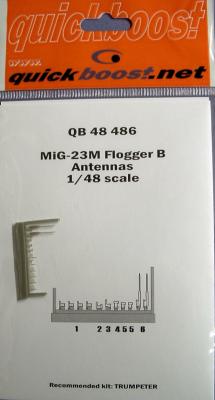
|
Mig-23M Flogger B AntennasPublished:
Note: the packaging of this set indicates that it is antennas. In fact the details are antennas and pitot tubes. As with most Soviet designed aircraft, the Mig-23 Flogger has numerous antennas and pitot tubes protruding from the airframe. Trumpeter has included all of them in their nice kit of the Flogger, but there are limitations in the injection molding process and you can only get parts so petite. A challenge is trying to get such small parts successfully off the sprue. PE parts offer a different challenge, being too flat for the scale. With this set, Quickboost provides replacements for most of the antennas and all of the pitots which can be used to enhance the detail or as a backup in case you are prone to shoot small parts off the work bench (hand raised). These are tiny… more |

|
Mig-23 Flogger Pitot TubePublished:
Prominent on the nose of the Mig-23 Flogger is a pitot tube. From a modeling perspective a nose pitot presents several challenges. First you hope that the part is not bent, broken or molded out of round. Surviving that, you then need to remove the pitot from the sprue, remove the mold lines and ensure that the cross section is round. Lastly, a nose pitot tube becomes a transportation liability during model shows and displays. This Quickboost product provides a safety net to the modeler who has had difficulty with any of these issues with the Trumpeter Mig-23 kit (or for that matter the Italeri/ESCI or Hobby Craft kits). Quickboost provides not one but two booms for the price. My sample was molded cleanly with no warping, although any bends could be corrected by immersion in hot… more |
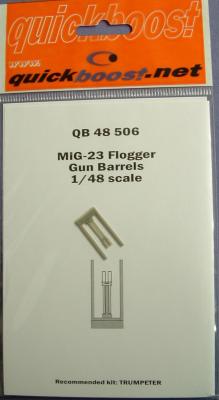
|
Mig-23 Flogger Gun BarrelsPublished:
Prominent on the underside of the Mig-23 is the twin GSH-23 twin barrel 23mm cannon which can be used air to air or air to ground. The Trumpeter 1/48 Mig-23M and Mig-23MF kits provide multiple parts to create the cannon – the L34 for the fairing, PE parts 2 and 3 for the shell ejection chutes and part C2 which consists of the twin cannon barrel. Once covered by the fairing, the only portion of the GSH-23 are the muzzles of thee barrels with their distinctive finned shaped. This offering by Quickboost is a one for one drop in replacement for kit part C2, providing a more accurate pair of muzzles that are physically separated, unlike the kit part which has the muzzles connected. My guess is that the kit muzzles are that way for easy of injection molding. The resin replacement is not only… more |
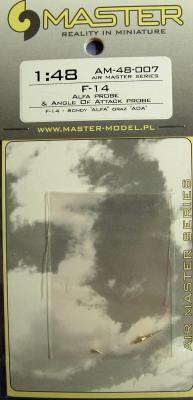
|
F-14 Alpha Probe and Angle of Attack ProbePublished:
I would like to thank Master Model for this review sample. Master Model has been literally “turning” out numerous metal details for the model maker. This latest offering is the Alpha Probe and angle of attack probe for the F-14 in 1/48. The alpha probe is the pitot at the forward end of the radome. For a model this is a very vulnerable place and no doubt, like me, you have managed to bend or snap off the plastic one provided in the kit. Quite frankly, they never look as crisp as the real thing and once the mold seam is removed can be a bit oblong in cross section. The angle of attack probe is the pointy short probe on the left side of the F-14 below and forward of the cockpit. On the Hasegawa kit it is molded with the fuselage. I managed to snap mine off while assembling the… more |

|
Mig-23 Wheel WellsPublished:
The Trumpeter Mig-23M and MF kits in 1/48 finally give the modeler an alternative to the Esci Mig-23/27 family of kits. While it has its own issues, the Trumpeter kit renders the other one obsolete. One problem with the Trumpeter kit are the main wheel wells. Trumpeter’s wells are under detailed and worse yet are symmetrical from port to starboard. This is not the case with the Mig-23; the wheel wells are quite different from one side to the other. Aires has crafted a solution! In addition to cockpits and engines, a staple in the Aires line are wheel wells. The ones I have used previously were far and away much better than the ones that they are intended to replace, these are just as nice. This new release by Aires provides 7 pieces crisply cast in durable grey resin including:… more |
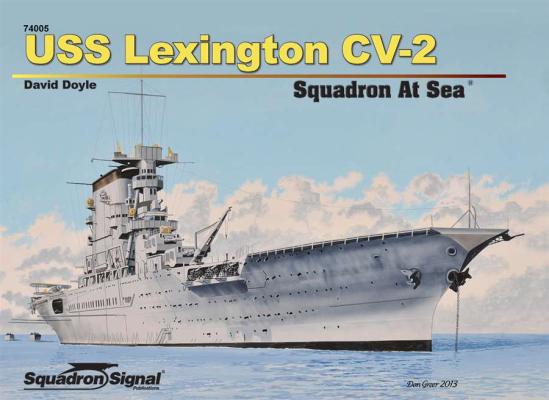
|
USS Lexington CV-2, Squadron at SeaPublished:
USS Lexington (CV-2) and her sister USS Saratoga (CV-3) played a critical role in the development of the modern naval aviation and the way the US Navy wields air power. Built on the hulls of battlecruisers cancelled in the 1920s under the terms of the Washington Naval Treaty, Lexington and Saratoga were far more different and innovative than the first US aircraft carrier, USS Langley CV-1, and any foreign contemporaries. They were the largest US carriers built until the Midway Class CVB. Both ships were quickly integrated into the battle fleet and participated in every major exercise in the 1930s and early 1940s. It was on these ships that the Navy envisioned, developed, and put in to practice the doctrine and procedures that would define an American way of Naval warfare and lead to… more |
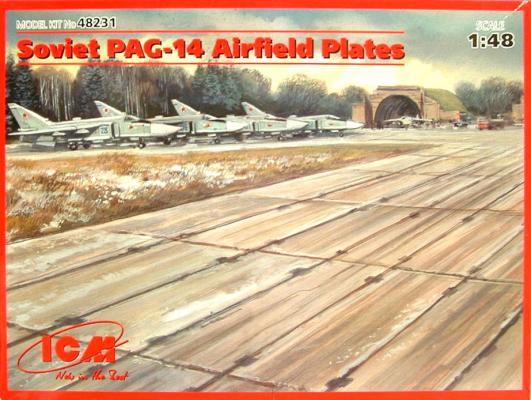
|
Soviet PAG-14 Airfield PlatesPublished:
One of ICM’s most recent offering is a set of PAG-14 Airfield plates used in the construction of airfields by the Soviet Union at home and in the Warsaw Pact nations. This particular set is for 1/48th scale. Knowing little of Soviet airfield construction – and what I did know centered on the use of hexagonal blocks for construction – I conducted online research into the PAG-14 plates. My first queries turned up a few photos, but then I found a research paper online — Naum Sapozhnikov and Raymond Rollings, Soviet Precast Pre-stressed Construction for Airfields, April 2007 — that shed a lot of light onto the use of these plates for airfield construction. Here is a little of the background from that paper. The Soviet Union began building its first concrete airfield… more |
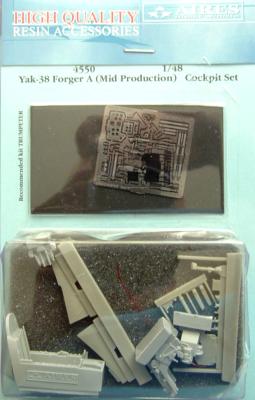
|
Yak-38 Forger A (Mid-Production) CockpitPublished:
The Yak-38 Forger was considered by many to be the Soviet Harrier. Like in the West, Soviet aircraft design bureaus were fascinated by the potential of VSTOL aircraft and undertook their own developmental efforts. The Forger was borne out of a requirement for a VSTOL fighter for the Soviet Navy to take to sea on the Kiev Class ships. The Kiev Class was technically not an aircraft carrier, but instead described as a heavy anti-submarine cruiser and, later, a tactical aircraft-carrying cruiser. The Forger was used both for air defense and in a short-range anti-ship role. Unlike the Harrier, the Forger did not survive the Cold War. The plane was functionally obsolescent and work was well underway on its replacement, the Yak-141 Freestyle, when the collapse of the Soviet Union heralded the… more |
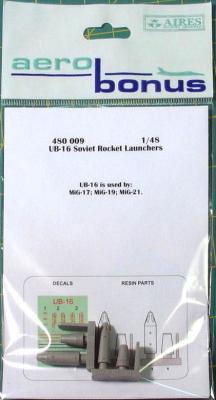
|
Soviet UB-16 Rocket PodsPublished:
There is probably no more uniquely a Soviet/Russian weapons system than the unguided rocket – think Katyusha. Their use, on a smaller scale, extended to Soviet concepts of close air support with aerial unguided rockets. Whereas in Western air forces the unguided rocket is a thing of the past in favor of precision munitions, they remain a staple with most Soviet/Russian-influenced air forces. Such is their belief in the system that the Soviet Union produced a broad array of rocket pods to accommodate their principal unguided 55mm aerial rocket, the S-5. Provided in this set is the early UB-16 without the extension tubes for the 5 interior rockets. Later UB-16s have the extension tubes. They are listed for use with the MiG-17, MiG-19, and the MiG-21, but I have also seen them carried on… more |
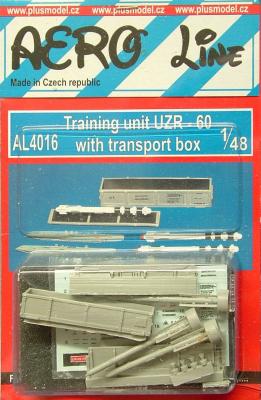
|
Soviet Training Unit UZR-60 Missiles with Transport BoxPublished:
The R-60 (AA-8 Aphid) is a Soviet/Russian short range infrared (IR) homing air-to-air missile. It has been fielded for 35 years and is widely used by a variety of Soviet/Russian manufacturer aircraft. For attack aircraft, it is their primary means of self-defense. The UZR-60 is the training variant of the R-60, distinguished by its lack of rear delta fins and the three black bands designating a training shape. It is a captive training shape that does not leave the missile rail. The UZR-60 has an active IR seeker, and interfaces with the aircraft’s weapons system to allow the pilot to determine when the missile has IR acquisition. There are a lot of R-60 missiles in 1/48 of varying detail and quality; Plus Model even makes a set similar to this one. This is the first training… more |
